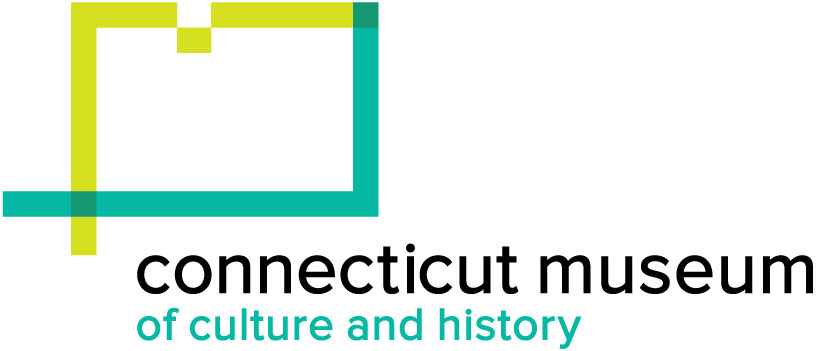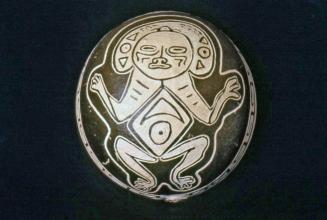Interview with Imna Arroyo
IntervieweeInterview with
Imna Arroyo
InterviewerInterviewed by
Ruth Glasser
(American)
Date1997 March 25
Mediumreformatted digital file from audio cassette
DimensionsDuration (side 1): 47 Minutes, 43 Seconds
Duration (side 2): 25 Minutes, 37 Seconds
Duration (total runtime): 1 Hours, 13 Minutes, 27 Seconds
ClassificationsInformation Artifacts
Credit LineConnecticut Cultural Heritage Arts Program collections
CopyrightIn Copyright
Object number2015.196.693a-d
DescriptionAudio cassette recording of an interview with Puerto Rican artist Imna Arroyo interviewed by Ruth Glasser on March 25, 1997. The interview was recorded in conjunction with the "Herencia Taina: Legacy and Life" exhibit.
There are speed issues at the start of side 2 with a dying battery on the tape recorder.
NotesBiographical Note: Imna Arroyo was the long-time Professor of Art at Eastern Connecticut State University until her retirement. She was also the advisor of the Printmaking Club there since 1994 and Chair of the Visual Art Department. Imna has exhibited her paintings, prints, silk screens, sculptures, and other art creations nationally and internationally, winning many accolades. Her work explores themes of identity, Black diaspora cultures, Puerto Rican history and contemporary issues, and women’s experiences. She has written about her work in publications and is featured in many prestigious museum, gallery and private collections. She founded the Windham Art Center and Gallery and is active in community arts initiatives such as Collectivo Mestizal, a Latin American and Caribbean group whose mission is to promote Latino arts, education and culture in the region. There are speed issues at the start of side 2 with a dying battery on the tape recorder.
Biographical Note: Ruth Glasser, Professor in the Urban and Community Studies Department at the University of Connecticut, was born and raised in Brooklyn, New York. She worked as a VISTA volunteer in North Carolina in 1979-1980. She has worked on a variety of academic and community-based endeavors including books, curriculum projects, oral history projects, and exhibits. Her publications include: "My Music is My Flag: Puerto Rican Musicians and Their New York Communities, 1917-1940" (University of California Press, 1995), "Aquí Me Quedo: Puerto Ricans in Connecticut" (Connecticut Humanities Council, 1997), "Aquí Me Quedo K-12 Curriculum Guide" (Mattatuck Museum, 1999), [as co-editor] "Caribbean Connections: Dominican Republic" (Teaching for Change, 2004). She assisted CCHAP with two projects: “Living Legends: Connecticut Master Traditional Artists,” interviewing Puerto Rican lace maker Bernabela Quiñones in 1994; and the “Herencia Taina: Legacy and Life” exhibition project in 1997.
Subject Note: "Herencia Taina: Legacy and Life" was an exhibit and related programs examining the history of Puerto Rico's indigenous people, the Taino through contemporary art expressions and interpretations, on view May 3-November 30, 1997 at the Institute for Community Research.
ICR's Connecticut Cultural Heritage Arts Program, in conjunction with project scholar Ruth Glasser and designer Ricardo Mulero, planned an exhibit, workshops, and concert to present a wide range of arts practiced by musicians and visual artists who are inspired by Taino heritage. Participating artists included Imna Arroyo (Eastern Connecticut State University), Graciela Quiñones (West Hartford), Mel Gonzalez (Meriden), and Robert Borrero (New York), who created contemporary interpretations and folk art works illustrating Taino heritage, such as musical instruments, gourd carvings, paintings, and textile art, as well as interpretive information for these. Their works were juxtaposed with Taino artifacts from archaeological collections, along with photographs and posters from the continuing indigenous festival held in Jayuya, Puerto Rico, to show the strong influence that Taino culture still holds for Puerto Ricans. The exhibit project also presented several public events including a concert, a workshop for teachers, and a roundtable discussion. An illustrated brochure in both English and Spanish was produced. The project was supported by the Connecticut Humanities Council, the Connecticut Commission on the Arts, the Edward C. and Ann T. Roberts Foundation, the Greater Hartford Arts Council, and the Institute for Community Research.
The heritage of the Taino Indians is often proudly proclaimed by Puerto Ricans as one of the three strands of their multi-racial society. What that heritage consists of, how much of it has survived, and its relative importance in the overall culture of the island has been a hotly debated topic for centuries. The Tainos, indigenous people living in Puerto Rico when colonists arrived in the late 15th century, provide an example of the politics and complexities of interpreting a culture which has only a small present-day community and no living language, but is both remembered from the recent past and still represented in blood lines, place names, some everyday practices, and spiritual and political inspiration.
Recreated musical instruments made by members of the group Cacibajagua showed how contemporary Puerto Ricans have been both adopting Taino heritage and basing their work on serious study of archaeology and indigenous materials. Cacibajagua demonstrated their music at a concert on May 1, 1997, at Charter Oak Cultural Center in Hartford.
Additional materials exist in the CCHAP archive for this project and this artist.
Cataloging Note: This project was made possible in part by the Institute of Museum and Library Services MA-245929-OMS-20.
Status
Not on viewRamón Arroyo
2002 August 7; ca. 1997













